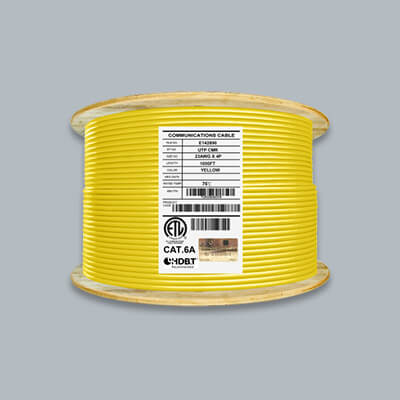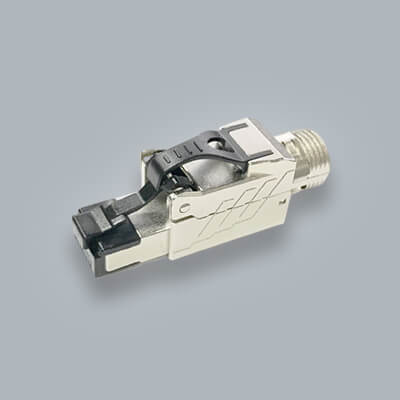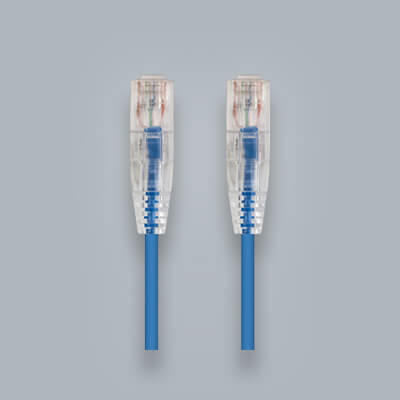What Is The Cat5e Max Speed?

Defining what this category of cable can do will help decide if this is the performance you are looking for. Older cable technologies are still in use today and we still see Cat5 cable inside many homes. the solution to this is to upgrade your home or business network. Which in this case is Cat5e cable. Cat5e cable is a very viable choice for many and in this article we will cover what is the Cat5e max speed capabilities.
What is the Cat5e Max Speed Capabilities?
Let's jump right into it. With Cat5e cable the max speed you can expect is 1Gb and 100Mhz. This is the specification according to TIA. Specifically, the TIA 568.2-D Standard which determines what the requirement would be for each cabling category. By abiding by this standard all manufacturers, customers and businesses would know what to expect and create less confusion with operating performance. This organization routinely gets together to set up new standards which determine what to expect in certain features of the networking industry. Now back to the performance.
Exploring Cat5e's Standard Speed
Cat5e cable, according to ANSI/TIA 568.2-D, supports a maximum speed capability of 100MHz and 1Gb (Gigabit) up to 328 feet (100 meters). It's recommended that within this 328 feet, the maximum length of the cable run should be 90 meters for the cable backbone and 10 meters for patch cables.
Unveiling Enhanced Performance with 350MHz
While the standard maximum speed of Cat5e cables is typically expected to be at 100MHz, it's common to find Cat5e cables labeled for 350MHz in today's market. This label indicates that the cable has been tested for performance at higher frequencies. Although this doesn't guarantee enhanced performance, it showcases the cable's potential to operate at these elevated levels. Despite the TIA's mandated maximum speed of 100MHz, cable companies have advanced by testing cables to 350MHz.
Ready to shop for Cat5e cables? Head on over to our collection of bulk Cat5e cables for industry leading performance in your home or business network.
Exploring Additional Performance Standards
With the inclusion of the IEEE 802.3bz standard you can even get more performance with your existing Cat5e cables. Under the standard of IEEE 802.3bz you can achieve up to 2.5GBase-T and 5GBase-T up to 328 Feet (100 meters).
It's able to achieve this by having the layer of transmissions be based on 10GBase-T but perform at a lower signal rate. When lowering the signal rate it reduces the cabling requirements giving you the ability to perform this on Cat5e. While this is certainly obtainable it's not a guarantee.
For Cat5e we can look to the baseline performance of 1Gb up to 328 Feet as the standard performance you can achieve and 2.5 or 5GBase-T being the performance under ideal environments including capable hardware.
Understanding Cat5e Specifications
When looking over Cat5e spec sheets you'll come across many different numbers and categories.
Here's an example of a test report of our unshielded Cat5e Plenum cable. You'll see the performance numbers at these different frequencies

The other thing to point out here is that Cat5e cable also has transmission requirements. You'll notice in the test report showing different transmission numbers. Such as Insertion Loss (IL), NEXT (Near End Crosstalk) ACR and RL. One of the most important factors to look at is crosstalk. You can learn all about it here what is crosstalk?
Cat5e cable is a great choice for residential installations with it's performance of 350MHz and 1Gb up to 100 meters. In 1 gigabit there is 1000 megabits so you can also expect a theoretical max transfer speed of 125Mb/s.
To get a more understanding of that with 1Gb you can transfer a gigabyte of data around 8 seconds. Pretty fast if you ask me!
Practical Applications of Cat5e Speed
-
Streaming high-definition video: With a 1 Gbps Cat5e cable speed, you can easily stream high-definition (HD) video from online services like Netflix, Hulu, and YouTube without any buffering or interruptions.
-
Gaming online: A 1 Gbps ideal for online gaming, allowing you to play games with minimal lag and a smooth, responsive experience.
-
Transferring large files: If you need to transfer large files, such as photos, videos, or documents, a 1 Gbps can help you do it quickly and efficiently.
-
Video conferencing: With a 1 Gbps you can participate in high-quality video conferences without any delay or choppy video.
-
Running a home network: A 1 Gbps can also be used to create a fast and reliable home network, allowing multiple devices to connect and share resources. This can be particularly useful if you have a large family with multiple devices, or if you run a small business from home.
Common Questions:
Cat5e UTP vs FTP Speed: Any Difference?
In terms of speed, both Cat5e UTP (Unshielded Twisted Pair) and FTP (Foil Twisted Pair) cables can support network speeds up to 1000 Mbps (1 Gbps). The primary difference between them lies in their ability to resist electromagnetic interference (EMI). FTP cables, with their foil shielding, offer better protection against EMI compared to UTP cables. However, this difference in shielding typically doesn't impact speed performance in most networking environments.
Cat5e Patch Cable Speed
Cat5e patch cables are designed to support network speeds up to 1000 Mbps (1 Gbps). They are commonly used to connect devices like computers, routers, switches, and modems to Ethernet networks. The speed of a Cat5e patch cable is determined by its construction quality, length, and the network devices it connects. Generally, shorter cables and higher quality construction can support faster speeds more reliably.
Conclusion
To recap, Cat5e speed has a standardized maximum performance of 100 MHz and 1Gb data rates up to 328 feet (100 meters)
With the improvement in technology and the need for increased frequency companies such as us have provided Cat5e cable to perform up to 350MHz from the 100MHz.
Happy Cabling !






My house is wired with cat5e and my Xbox is hard wired to a switch that connects all my rooms then router and modem. It gets 1276 Mbps dl and 800 upload. Not sure why everyone says cat5e can only do a gig.
Hello Robert, Thank you for the comment. With the current cable you have in your house you should be able to get up to gigabit. Cat5e is rated for 1,000mbps so you should be able to get the 200 mbps you are offered. Cat5 is actually rated for 100mbps and Cat5e is rated for up to gigabit. Check out this article when you have a chance as well: https://infinity-cable-products.com/blogs/performance/cat-5-cable-speed-explained
When our house was built in 2004 they installed a structured wiring system that included Cat5e throughout the house. I have our PC connected with a Ethernet cable to one of the outlets in the office. Our internet provider is MetroNet who transmits over fiberoptic cable directly to the modem in the cabinet of the structured wiring system. When I ran a speed test I only got a Down Load of 96.68 and an Up Load of 94.48. MetroNet said that with the Cat5e cable I can only get up to 100 mps. When I signed up with them they were offering 200 mps service, which I selected. So my question is – should I be able to get 200 mps with the Cat5e cable I have in the house?